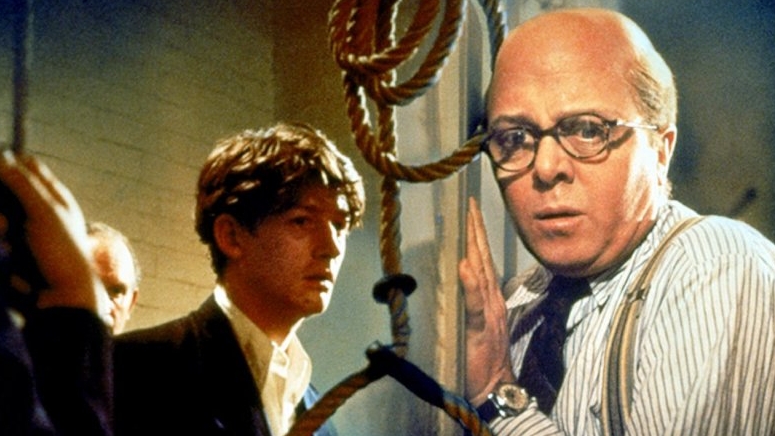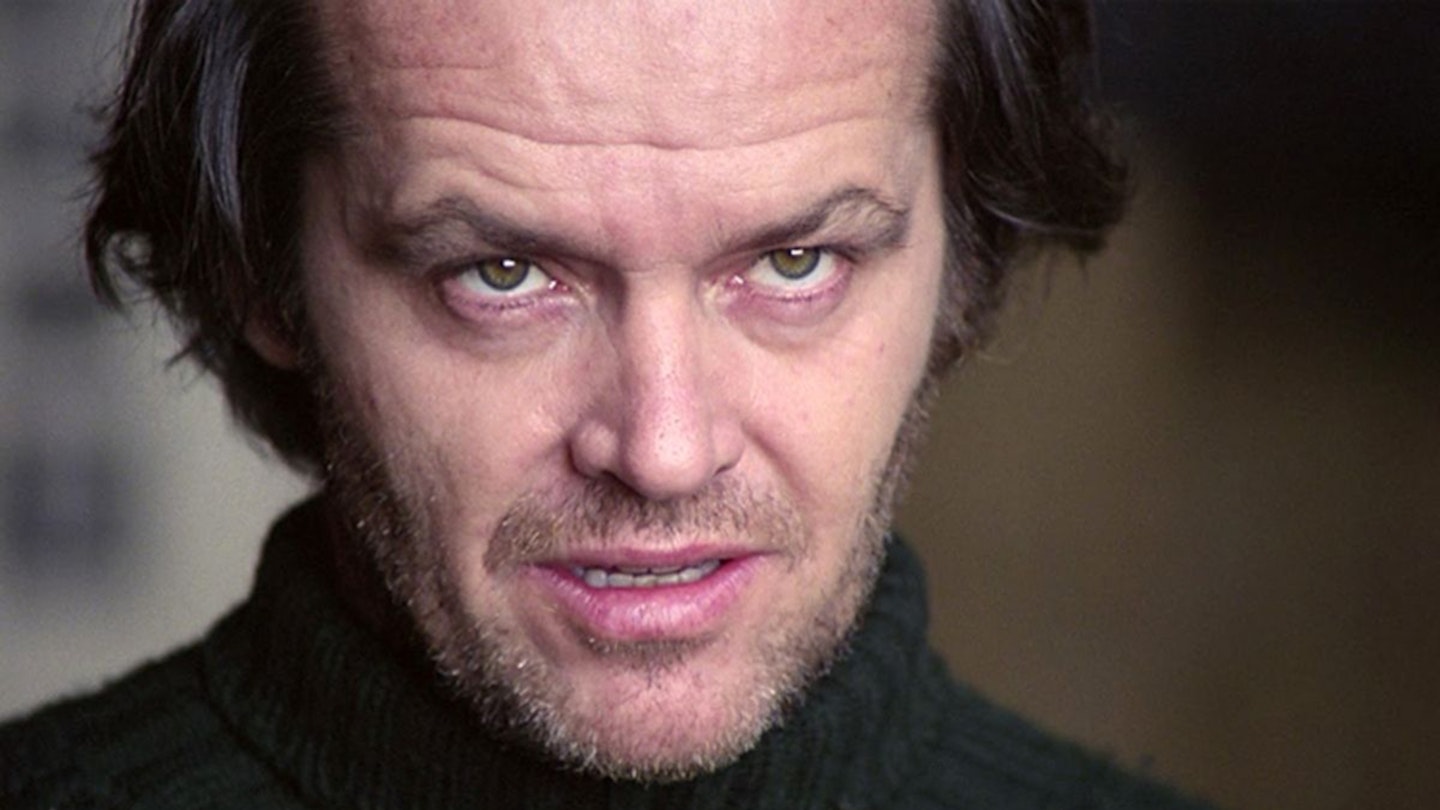
There’s something uniquely captivating about horror movies, isn’t there? We sit on the edge of our seats, heart rates pounding, eagerly anticipating the next jump scare or the creeping dread that promises to linger long after the credits roll. But what truly elevates a horror film from mere entertainment to a deeply unsettling experience is the chilling revelation that its terrifying scenarios are, in fact, rooted in the unsettling annals of real-life events. That’s when the fear truly sets in, shifting from cinematic fantasy to a haunting echo of reality.
For dedicated fans of the macabre, the profound knowledge that a film’s horror isn’t solely conjured from a screenwriter’s vivid imagination adds an entirely new, insidious layer of terror. It transforms a simple cinematic experience into a harrowing reflection of real-world nightmares, starkly reminding us that sometimes, the unvarnished truth is undeniably stranger, and profoundly scarier, than even the most imaginative fiction. These are the stories that burrow deep into our collective consciousness, not just because they depict terrifying possibilities, but because they embody horrifying events that genuinely *happened*.
So, prepare yourself, if you dare, as we embark on a journey through some of the most spine-chilling horror films ever conceived, each one drawing its unsettling power from truly unbelievable real-life occurrences. From the insidious deeds of elusive serial killers to the inexplicable phenomena of the paranormal and harrowing tales of human endurance against unthinkable odds, these movies tap into our deepest, most primal fears. They achieve this by powerfully demonstrating that the monstrous can indeed walk among us, or perhaps, lurk just beyond the veil of our everyday perception. Get ready to fundamentally reconsider what truly frightens you as we delve into the horrifying truths that inspired these cinematic masterpieces.

1. **Zodiac (2007)**: David Fincher’s “Zodiac” isn’t merely a crime thriller; it’s a meticulously crafted descent into an obsession born directly from a real-life reign of terror. The film chronicles the chilling saga of the notorious Zodiac Killer, a figure who relentlessly terrorized the San Francisco Bay Area in the late 1960s with a string of still-unsolved murders. What distinguishes this cinematic masterpiece and makes it so uniquely unnerving is its primary focus, not on the brutal slayings themselves – though they are re-enacted with unnerving, meticulous detail – but rather on the complex, maddening rabbit hole the killer opened up with his cryptic puzzles and coded messages disseminated through the press.
The narrative brilliantly portrays how this elusive killer’s perverse game utterly consumed political cartoonist Robert Graysmith, a role brought to vivid life by Jake Gyllenhaal. Graysmith’s decades-long, relentless obsession with uncovering the Zodiac’s true identity ultimately took a devastating personal toll, costing him his marriage and much of his personal life. This enduring, pervasive fascination with the case is a powerful testament to the killer’s profound impact, especially considering that every few years, some new theory or piece of evidence arises about who committed the killings, demonstrating that Graysmith was clearly far from the only one drawn into this bewildering, dangerous quest for truth.

2. **The Amityville Horror (1979)**: “The Amityville Horror” stands as one of the earliest and most impactful horror movies to aggressively promote itself as a “true story,” a marketing strategy that immensely contributed to its monumental box office success and cemented its enduring legacy in the genre. Stuart Rosenberg’s film unfolds as a sufficiently scary haunted house flick, detailing a family’s horrifying encounter with supernatural harassment. According to the foundational book it was based upon, in 1975, a family moved into a house in Long Island that had previously been the site of a grisly mass murder, only to be subsequently driven out by malevolent, unseen spirits.
While skeptics and debunkers have, for decades, largely discredited the more sensational claims beyond the initial murders, the movie itself was an enormous, unexpected hit. It revolutionized the concept of “possessed real estate,” making it terrifyingly relatable for the American middle-class audience. Its widespread influence is undeniable, clearly informing and inspiring a whole generation of subsequent horror films, ranging from the classic “Poltergeist” to the found-footage phenomenon of “Paranormal Activity,” alongside numerous less acclaimed, but profitable, sequels that continued to capitalize on its pervasive and frightening legend.

3. **The Conjuring (2013)**: James Wan’s “The Conjuring” didn’t just become a successful horror film; it quite literally elevated paranormal investigators Ed and Lorraine Warren from semi-famous figures within their niche field to arguably the most renowned ghost hunters in the entire world. Prior to this cinematic masterpiece, the Warrens were certainly known for their work, but Wan’s brilliant decision to adapt their most widely publicized case into a terrifyingly effective throwback haunted house movie dramatically expanded their global recognition. The film’s monumental success even laid the foundation for the incredibly lucrative “Conjuring Universe,” a sprawling horror franchise that has since spun off in multiple directions, including the immensely popular “Annabelle” movies.
The original “The Conjuring” draws its direct, chilling inspiration from the Warrens’ detailed account of their investigation into intense supernatural activity at a crumbling farmhouse located in Rhode Island, a deeply unsettling event that reportedly took place back in 1971. The film gleefully, and skillfully, mashes up numerous classic horror tropes, including a generous, perfectly timed dose of jump scares, to craft a truly terrifying and immersive experience. It also definitively showcased Wan’s versatile directorial talent, proving beyond doubt that he possessed the ability to conjure up far more than just the visceral nausea previously associated with his groundbreaking, yet polarizing, “Saw” franchise, instead delivering a nuanced, deeply atmospheric, and truly unsettling brand of terror.

4. **Compliance (2012)**: Craig Zobel’s independent thriller “Compliance” delves into a deeply disturbing narrative, one that diverges from conventional horror by not involving death or traditional bloodshed. Instead, its chilling essence lies in its profound exploration of human psychology and the insidious nature of unquestioning obedience. The film is shockingly inspired by a truly bizarre and horrific incident that occurred in 2004, where a man, convincingly impersonating a police officer, telephoned a fast-food restaurant situated in rural Kentucky. Through an astonishing display of verbal manipulation, he managed to persuade the unsuspecting employee who answered the call to strip-search her coworker, initiating what quickly spiraled into a series of rapidly escalating and profoundly humiliating indignities.
Instead, Zobel masterfully uses this bizarre and disturbing event as a powerful, unsettling springboard. He meticulously explores a deeply disquieting aspect of the American social fabric: its ingrained and often unexamined fealty to authority figures. The resulting claustrophobic drama shines a harsh, unforgiving light on how easily ordinary individuals can be coerced into committing shocking and morally reprehensible acts when they are convinced they are merely following legitimate instructions, making it a terrifying and thought-provoking examination of social compliance and its dangerous pitfalls.

5. **10 Rillington Place (1971)**: Richard Fleischer’s “10 Rillington Place” stands as an essential, though perhaps under-seen, cinematic gem within the true crime genre, bringing to horrifying, stark life the grim story of John Christie, who is arguably second only to Jack the Ripper as London’s most infamous serial killer. Christie, an outwardly unassuming postman, systematically terrorized the city through the 1940s and ’50s, strangling at least eight women, including his own wife, and chillingly concealing their corpses within the very walls of his Notting Hill flat. This film meticulously delves into the gruesome and disturbing details of his prolonged killing spree with a stark, unsettling realism that leaves a lasting impression.
Central to the film’s enduring impact and its visceral horror is Richard Attenborough’s truly chilling and unforgettable lead performance as the malevolent John Christie. Attenborough’s portrayal was so intensely disturbing and authentically sinister that the actor himself publicly claimed it haunted him for a long while afterward, a profound testament to the character’s unsettling veracity and the psychological toll of embodying such evil. The movie serves as a grim and potent reminder of the banality of evil, demonstrating how the most monstrous and unthinkable acts can be committed by seemingly ordinary, unassuming individuals, thereby solidifying its place as a profoundly disturbing and terrifying cinematic experience.

6. **Open Water (2003)**: “Open Water” brilliantly capitalizes on a primal, deeply unsettling fear that often lurks in our subconscious minds: the terrifying prospect of being stranded, utterly alone and vulnerable, in the vast, indifferent expanse of the open ocean during a seemingly innocuous scuba diving trip. This specific nightmare became a horrifying, bewildering reality for Americans Tom and Eileen Lonergan in 1998, when the boat intended to transport tourists back to shore after exploring the majestic Great Barrier Reef accidentally departed without them. The precise, ultimate fate of the Lonergans remains a haunting mystery, as their bodies were never found, which adds an unbearable layer of unresolved dread and chilling ambiguity to their tragic story.
Filmmaker Chris Kentis, however, courageously presents his harrowing and visceral vision of what might have transpired in those terrifying hours, a vision that, to heighten the horror, includes the ominous presence of a horde of hungry sharks. While the initial premise of observing a helpless couple on the verge of becoming “bobbing meat snacks” might not immediately sound like the makings of a compelling movie, Kentis masterfully imbues the entire incident with an almost unbearable, severely anxious realism. He achieved this astonishing authenticity by boldly shooting the film in the actual open ocean, utilizing real, live sharks, a decision that lends an unparalleled sense of danger and genuine terror, keeping your stomach tied in excruciating knots for the film’s entire 80-minute runtime, thus making it a truly visceral, unforgettable, and deeply terrifying experience.




